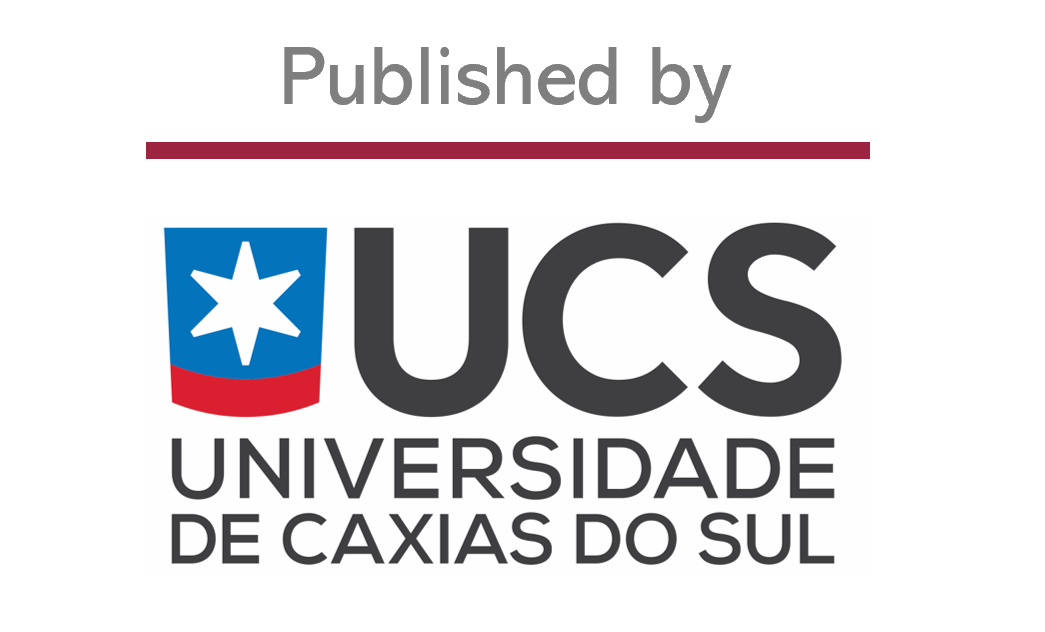Influence of sulfide on the evaluation of methane production through the degradation of sugarcane vinasse
DOI:
https://doi.org/10.18226/23185279.v6iss2p1Abstract
Anaerobic digestion is a widely used effluent and organic waste treatment practice, in which it is possible to minimize and control environmental problems, associating the reduction of environmental impacts with energy recovery. Low methane production and process instability are often found in anaerobic digestion reactors, preventing this technique from being widely applied. Inhibitory substances, such as sulfides resulting from sulfate conversion by the sulfur reducing bacteria, are one of the causes of inhibition or malfunctioning of anaerobic digesters if they are present in the effluent to be treated. The objective of this work is to evaluate the effect of sulfide at two different values of pH (7.0 and 7.5) using sulfide concentrations of 0 to 1000 mg S2-L-1. All the tests were performed in batches and performed at mesophilic conditions. For the concentrations of 50 mg S2-L-1 and 1000 mg S2-L-1, the inhibitions of the methanogenic activity at pH 7.0 were in the order of 38.5% to 59.8% and at pH 7.5 in the order of 67% to 94%, respectively. Concerning the test at pH 7.0, the removal of COD in the experiment without addition of any concentration of S2- was 93.3%, and it reached a 49.14% COD removal at concentrations of 1000 mg S2-L-1. At pH 7.5 under the same conditions, the COD removals were respectively 80.7% and 9.6%. The concentrations of 50, 75 and 100 mg S2-L-1 of S2- initially tested at the two aforementioned pH values promoted the greatest increase in the reduction of SMA. When the experiments were carried out at pH 7.0 the reductions were 37.96%, 41.70%, and 46.06% respectively for the same concentrations. At pH 7.5 the reductions represented 67.01%, 82.47% and 81.81%.
References
ANP. (2016) Agência Nacional do Petróleo, Gás Natural e Biocombustíveis, Boletim do Etanol Nº 06/2016. Available in: . Rio de Janeiro: ANP.
BARRERA, E. L. et al.Characterization of the sulfate reduction process in the anaerobic digestion of a very high strength and sulfate rich vinasse. Chemical Engineering Journal, v. 248 , p. 383-393, 2014.
BUDIYONO; SYAICHURROZI I.; SUMARDIONO, S. Biogas production from bioethanol waste: the effect of pH and urea addition to biogas production rate. Waste Tech., v. 1, p. 1-5, 2013.
BUDIYONO, I. N.; WIDIASA, S. J.; SUNARSO. The kinetic of biogas production rate from cattle manure in batch mode. International Journal of Chemical and Biological Engineering, v. 3, n. 1, p. 39-44, 2010.
COLLERAN, E.; FINNEGAN, S.; LENS, P. Anaerobic treatment of sulphate-containing waste streams. Antonie van Leeuwenhoek, v. 67, p. 29–46, 1995.
DAMIANOVIC, M. H. R. Z.; FORESTI, E. Anaerobic degradation of Synthetic wastewaters at different levels of sulfate and COD/Sulfate ratios in horizontal-flow anaerobic reactors (HAIB). Environmental Engineering Science, v. 24, n. 3, 2007.
FERRAZ, A. D. N. J.; ETCHEBEHERE, C.; ZAIAT, M. Mesophilic hydrogen production in acidogenic packed-bed reactors (APBR) using raw sugarcane vinasse as substrate: Influence of support materials. Anaerobe, v. 34, n. 94-105, 2015.
FERREIRA, L. F. R. et al. Evaluation of sugar-cane vinasse treated with Pleurotus sajor-caju utilizing aquatic organisms as toxicological indicators. Ecotoxicology and Environmental Safety, v. 74, n. 1, p. 132–137, 2011.
GIBERT, O.; PABLO, J.; CORTINA, J. L.; AYORA, C. Treatment of acid mine drainage by sulphate-reducing bacteria using permeable reactive barriers: A review from laboratory to full-scale experiments. Environmental Science & Bio/Technology, v. 1, p. 327–333, 2002.
GOYAL, S. K.; SETH, R.; HANDA, B. K. Diphasic fixed-film biomethanation of distillery spentwash. Bioresource Technology, v. 56, n. 2-3, p. 239–244, 1996.
HARADA, H.; UEMURA, S.; MONOMOI, K. Interactions between sulphate-reducing bacteria and methane-producing bacteria in UASB reactors fed with low strength wastes containing different levels of sulphate. Water Res, v. 28, p. 355–367, 1994.
HATI, K. M. et al. Soil properties and crop yields on a vertisol in India with application of distillery effluent. Soil and Tillage Research, v. 92, n. 1-2, p. 60–68, 2007.
JANKE, L. et al. Enhancing biogas production from vinasse in sugarcane biorefineries: Effects of urea and trace elements supplementation on process performance and stability. Bioresource Technology, v. 217, p. 10-20, 2016.
KHAN, A. W.; TROTTIER, T. M. Effect of sulfur-containing compounds on anaerobic degradation of cellulose to methane by mixed cultures obtained from sewage sludge. Environmental Microbiology, n. 6, v. 35, p. 1027-1034, 1978.
KOSTER. I. W. et al. Sulfide inhibition of the methanogenic activity of granular sludge at various pH levels. Water Res., v. 20, p. 1561–1567, 1986.
KROISS, H.; PLAHL-WABNEGG, F. Sulfide Toxicity with anaerobic waste water treatment. Anaerobic waste water treatment - Proccedings of the European Symposium, 1983.
LIAMLEAM, W.; ANNACHHATRE, A. P. Electron donors for biological sulfate reduction. Biotechnology Advances, n. 25, p. 452-463, 2007.
O’FLAHERTY, V.; MAHONY, T.; O’KENNEDY, R.; COLLERAN, E. Effect of pH on growth kinetics and sulphide toxicity thresholds of a range of methanogenic, syntrophic and sulphate-reducing bacteria. Process Biochem, v. 33, p. 555-569, 1998.
PARKIN, G. F.; SPEECE, R. E. Attached versus suspended growth anaerobic reactors: response to toxic substances. Water Sci Technol, v. 15, p. 261–289, 1983.
PARKIN, G. F. et al. Interaction between sulfate reducers and methanogens fed acetate and propionate. Res. J. Water Pollut. Control Fed., v. 62, p. 780–788, 1990.
RAIS, M.; SHEORAN, A. Treatment of Sugarcane Technology issues Effluents : Major Producing States in India. v. 5, n. 1, p. 11–19, 2015.
RINZEMA, A.; LETTINGA, G. (1988). The Effect of Sulfide on The Anaerobic Degradation of Proprionate. Environ. Technol. Lett, v. 9, p. 83, 1988.
SOUZA, M. E. Fatores que influenciam a digestão anaeróbia. Revista DAE, n. 137, v. 44, p. 88-94, 1984.
SYAICHURROZI, I.; BUDIYONO; SUMARDIONO, S. Predicting kinetic model of biogas production and biodegradability organic materials: Biogas production from vinasse at variation of COD/N ratio. Bioresource Technology, v. 149, p. 390-397, 2013.
WINIFREY, M. R.; ZEIKUS, J. G. Effect of sulfate on carbon and electron flow during microbial methanogenesis in fresh water sediments. Env. Microbiology, v. 33, p. 275-281, 1977.
YUAN, H; ZHU, N. Progress in inhibition mechanisms and process control of intermediates and by-products in sewage sludge anaerobic digestion. Renewable and Sustainable Energy Reviews, v. 58, p. 429-438, 2016.
YUSUF, M. O. L.; IFY, N. L. The effect of waste paper on the kinetics of biogas yield from the co-digestion of cow dung and water hyacinth. Biomass and Bioenergy, v. 35, p. 1345-1351, 2011.
APHA. (2012) Standard methods for the examination of water and wastewater. Anais...Washington: American Public Health Association.
VISSER, A.; NOZHEVNIKOVA, A. N.; LETTINGA, G. Sulphide inhibition of methanogenic activity at various pH levels at 55ºC. Chemical Technology and Biotechnology, v. 57, p. 9-13, 1993.
Downloads
Published
How to Cite
Issue
Section
License
Copyright (c) 2018 Scientia cum Industria

This work is licensed under a Creative Commons Attribution 4.0 International License.
Declaração de originalidade e cessão de direitos autorais
Declaro que o presente artigo é original, não está sendo tendo sido submetido à publicação em qualquer outro periódico nacional ou internacional durante o processo de revisão. Através deste instrumento, em meu nome e em nome dos demais co-autores, porventura existentes, cedo os direitos autorais do referido artigo à revista SCIENTIA CUM INDUSTRIA. Contudo, a reprodução total ou parcial impressa ou eletrônica pode ser feita desde que o autor comunique oficialmente à revista. Declaro estar ciente de que a não observância deste compromisso submeterá o infrator a sanções e penas previstas na Lei de Proteção de Direitos Autorias. Declaro estar ciente de que a não observância deste compromisso submeterá o infrator a sanções e penas previstas na Lei de Proteção de Direitos Autorias (Nº9610, de 19/02/1998).




